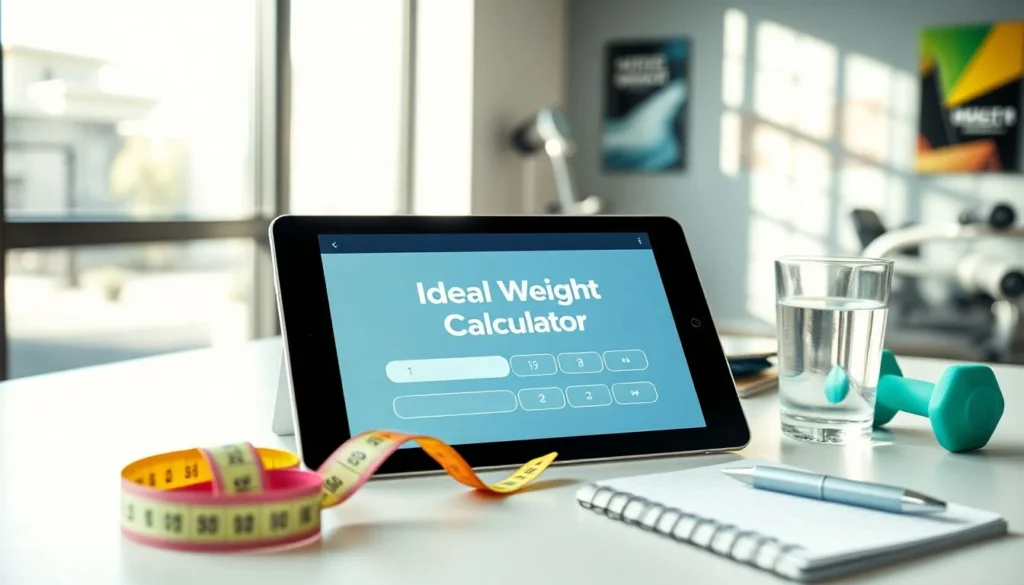Ideal Weight Calculator: Your Ultimate Guide to Achieving and Maintaining a Healthy Weight

Keeping a healthy weight isn’t just about looking good—it’s about feeling good and staying strong. Many health issues are linked to being either underweight or overweight. In fact, obesity affects over 650 million adults worldwide, according to recent stats, and undernutrition still impacts millions too. An ideal weight calculator can be a simple tool to help you set realistic goals and stay on track with your health journey. It takes guesswork out of weight management, making your approach clearer and easier.
What Is an Ideal Weight Calculator?
Overview of the Ideal Weight Calculator
This tool helps you find the weight that’s best for you, based on different methods. Some calculators focus on the Body Mass Index (BMI)—a number that shows if you’re underweight, normal, overweight, or obese. Others look at waist-to-hip ratios or body fat percentage. Each method gives a different glance at your health and helps you understand where your weight stands.
Why Using an Ideal Weight Calculator Matters
Personalized weight assessments help you know what’s healthy for your body. Being too heavy or too light can lead to health problems—from heart disease to weakened immunity. Experts agree that setting personalized goals based on your unique figure is smarter than just going by averages. Plus, tracking your progress keeps you motivated and aware of what works best for you.
Factors Influencing Your Ideal Weight
Height and Body Frame
Your height plays a big role in what weight suits you. Tall people naturally weigh more, but body frame size matters even more. If you have a small frame, your ideal weight will be lower than someone with a large frame. To determine your frame size, you can check your wrist or consult a health professional.
Age and Gender
As you get older, muscle mass tends to decrease and fat might increase. That can change what your ideal weight is at different ages. Men and women also store fat differently—men usually carry more muscle, women more fat, especially around hips and thighs. Knowing these differences helps you set realistic goals.
Lifestyle and Activity Level
Are you very active or mostly sedentary? Your day-to-day activity impacts what weight range is healthy for you. Athletes might weigh more but have less body fat. Someone with a desk job needs to aim for a different range than a person who walks or exercises daily.
Genetic and Medical Factors
Some people are naturally predisposed to be larger or smaller due to genes. Medical issues like thyroid problems or hormonal imbalances also affect weight. These factors should be considered when using an ideal weight calculator, and consulting your doctor can give you better guidance.
How to Calculate Your Ideal Weight
BMI Method
BMI is calculated by dividing your weight in kilograms by your height in meters squared. It’s quick and easy but has some limits—like not distinguishing between muscle and fat. Use BMI charts to see if you’re underweight, normal, overweight, or obese. For example, a BMI between 18.5 and 24.9 is generally healthy.
Waist-to-Hip Ratio
This ratio looks at where your body stores fat. Measure your waist at the narrowest point and hips at the widest. Divide waist measurement by hip measurement. A higher ratio indicates more abdominal fat, increasing health risks like heart disease.
Body Fat Percentage
You can estimate your body fat using tools like skinfold calipers or bioelectrical impedance scales. Healthy body fat ranges vary with age and gender but generally fall between 10-20% for men and 18-28% for women. Knowing your body fat percentage gives a clearer picture than weight alone.
Other Methods and Tools
Online calculators make it easy to combine multiple measurements—weight, height, waist, and body fat—to get a well-rounded view. Many apps also log your progress, making weight management more manageable and less confusing.
Interpreting Your Ideal Weight Results
Understanding Weight Categories
Your calculated weight helps you see if you’re underweight, at a healthy level, or carrying too much fat. Each range has different health implications. Being underweight can weaken your immunity, while excess fat increases heart risks. Knowing your category guides your next steps.
Setting Realistic Goals
Once you know your ideal weight, plan achievable targets. Remember, big changes happen with small, steady steps. Losing a pound or two a week is safer and more sustainable than drastic dieting.
When to Consult a Healthcare Professional
If your results show you’re significantly outside the healthy range, or if you have underlying health conditions, talking to a doctor is a smart move. They can offer personalized advice and help refine your goals based on medical history.
Practical Tips for Achieving and Maintaining Your Ideal Weight
Nutrition Strategies
Eat a balanced mix of fruits, vegetables, lean proteins, and whole grains. Portion control and mindful eating prevent overeating. Don’t skip meals; instead, focus on nutritious choices.
Physical Activity Recommendations
Mix cardio like walking or biking with strength training to boost muscle and burn fat. Aim for at least 150 minutes of activity weekly, or more if you’re working on weight loss goals. Find routines you enjoy to stick with them.
Lifestyle Modifications
Getting enough sleep helps regulate hunger hormones. Managing stress reduces unhealthy cravings, and drinking plenty of water keeps you feeling full. Avoid fad diets that promise quick fixes—they’re usually unsustainable.
Monitoring Progress
Use weight journals or apps to track your changes weekly or monthly. Adjust your habits based on what the numbers tell you. Celebrate small wins to stay motivated and focused.
Conclusion
An ideal weight calculator is a simple yet powerful tool to support your health journey. It helps you understand your body better and set realistic, personalized goals. Remember, achieving a healthy weight isn’t just about numbers—it’s about creating a balanced lifestyle. Keep reassessing regularly, stay active, eat well, and don’t hesitate to seek professional advice when needed. Your health is worth it.
Key Takeaways
- Personal assessments based on multiple factors lead to better health outcomes.
- Combining tools like BMI, waist ratios, and body fat percentage offers a complete picture.
- Steady, sustainable habits are the best way to reach and keep your ideal weight.
